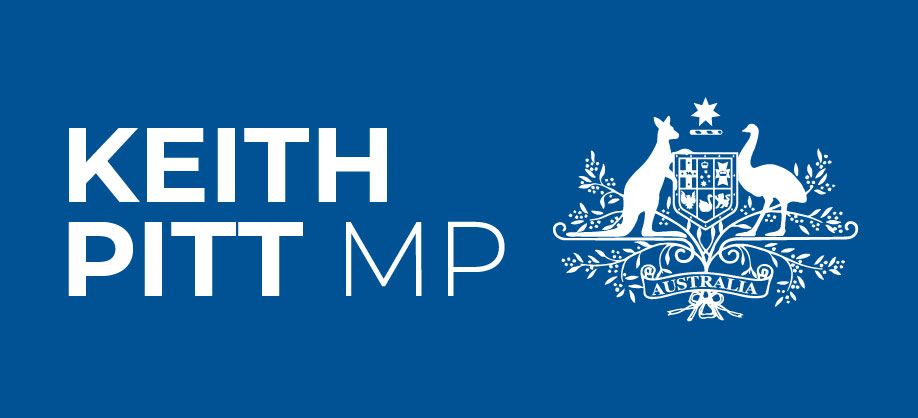PMB – Populations in the regions
Mr PITT (Hinkler): I rise to speak on this PMB. As has been pointed out by many of the speakers this morning, one of the great opportunities, particularly for regional centres like my own, is the decentralisation of not only the Public Service but also there are opportunities within Defence for trade with local ports. I think we do need to continue to focus on identifying the regions in our areas which would most benefit from support, particularly at a federal level. Planning is a state matter. It is a state and local government matter. There is no doubt about that. But at a federal level we do have leavers which can direct policy and, in particular, for areas like mine, we can direct high-paying jobs and highly skilled jobs into a region which desperately need them.
In my electorate, we have a per capita income each year of just $34,000—it is the lowest in the country. We have an unemployment rate of over nine per cent and a youth unemployment rate of around 27½ per cent, right now. This is completely unacceptable. So what are we doing? As the local member, I’m trying to increase the opportunities for jobs in our region, and to do that we need to put more strands into our economy. We’re a very strong agricultural producer and it’s a great place for tourists; I invite you once again, Deputy Speaker Bird, to come up and see the whales at Hervey Bay or the turtles at Mon Repos, take in the culture or the ambience, even on to the islands and the beaches. There are great opportunities for tourism, but we do need to strengthen our economy and make it more resilient. There is an opportunity to do that with decentralisation.
Can you imagine what a 500-person department would do for one of my major centres—for Hervey Bay or Bundaberg—on an average wage of above $80,000, as they tend to be here in Canberra? I reflect on the contribution last week of the member for Canberra, who was adamant that no-one should shift from Canberra. I understand that, as a local member. But as an individual, as a member of parliament and as a taxpayer, my view is very straightforward: we should be able to spread the benefits that the Australian taxpayer provides not only to the public service but to all levels of government so that all Australians get that opportunity. There are opportunities right now to decentralise into the regions. It does need to be strategic; it does take planning; you certainly need to move people to an opportunity where there is betterment for them.
Right now, in the city of Hervey Bay you could buy a house for $250,000, you can take a flight directly to Sydney every single day, you can live in one of the most spectacular parts of our country and go to the beach in the afternoons. It is a real opportunity, and it is the reason that so many people retire to my area—they can sell from Sydney, Melbourne or Brisbane, buy a very, very good house locally, have a substantial amount of money left to fund their retirement and live in one of the most wonderful places in our country. I understand why they do it, but we need to continue to drive our economy.
We also do need to look at regional immigration, as has been suggested. We are built on a nation of immigrants, apart from, of course, those who were here before us. Looking at some of the famous names around my regions—Arnicars, Asnicars, Bertollas, Santa Lucias—can I suggest that they weren’t amongst some of the first people; they’ve come across for opportunity and that opportunity was around work.
We can drive opportunities into the regions. Through decentralisation, we can drive high-paying jobs into the regions. We can make policy decisions about regional immigration, which will provide very, very high-paying jobs, support and skilled people where they are needed, but it does need to go to an area where that region agrees. Where local councils and others agree to a regional immigration plan, I think that should be supported. But it shouldn’t be into those areas of high unemployment already. We need to build the economy in those local regions, particularly in mine, because of the difficulties that we face right now. To do that, the government is providing infrastructure, as mentioned by the member for Goldstein, including: the Roads of Strategic Importance initiative at around $3.5 billion, a $75 billion infrastructure investment plan over the next 10 years, and a substantial investment into the Bruce Highway, which is the lifeline of regional Queensland. Without it, we cannot provide our products to the Brisbane port, and we cannot get our people down there to get services such as health care and additional education facilities. We have good local universities, but we need that linking infrastructure to continue to build our local economies.
Whether it’s ports, whether it’s roads, whether it’s rail or whether it’s airports, this coalition government is delivering for the people of regional Australia and regional Queensland in particular. We do need to plan into the future. The question I put is: where is our next million-plus head population centre? Where is the next one? We should be planning for the future for that opportunity, and we should do it.

